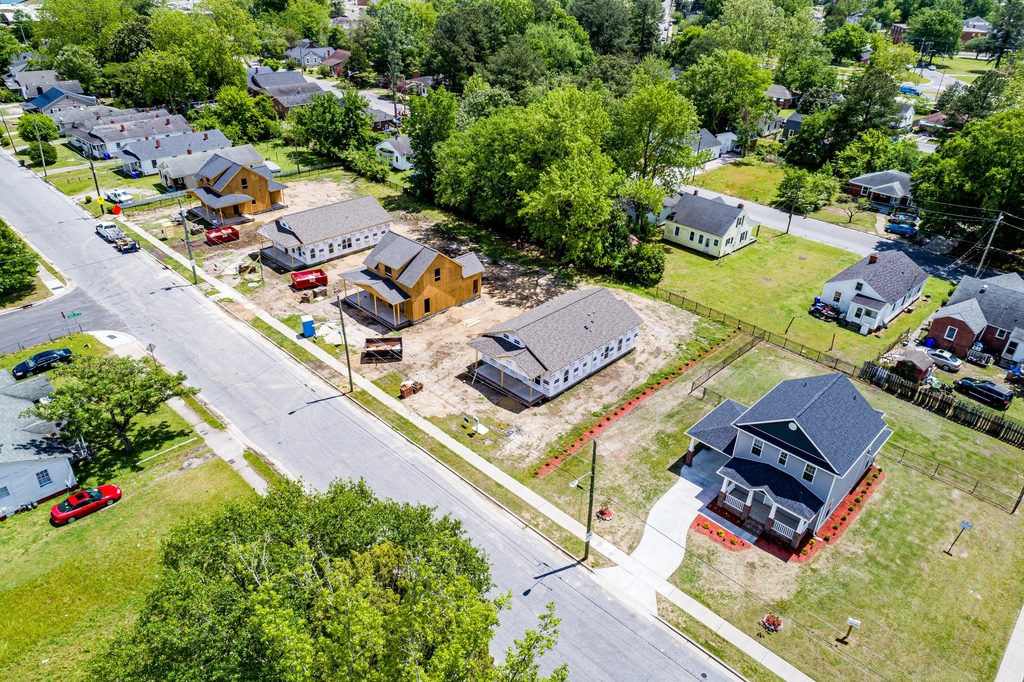Record-Breaking Exodus from California

California lost a total of 239,575 residents to other states, the largest net domestic migration loss in the country over the past year. The Golden State’s continuous population drain has accelerated, with 441 businesses leaving California since 2018 and moving their headquarters to a different state. For the least popular move-to state, California, 2024 marked its lowest in-to-out ratio since tracking began in 2020, with just 48 searches for moves to California for every 100 searches for moves out. The median home value in California sits at a staggering $773,300, making homeownership increasingly unattainable for many families. The statewide median home price in April 2025 hit a new all-time high of $910,160, up 2.9% from March 2025. Monthly payments for a mid-tier home now reach nearly $5,900 a month in March 2024—an 82 percent increase since January 2020.
New York’s Continuing Population Hemorrhage

New York, another blue bastion in the country, saw the second-highest loss, losing a total of 120,917 residents between 2023 and 2024. In the first months of 2025, New York City has been the biggest exit city in the country, with more than twice as many searches for moves out as in. The Empire State carries the costliest state and local income taxes in the nation, at 5.8% of its residents’ income. What’s shocking is how this represents an improvement from previous years—New York experienced a net loss of 176,893 residents for the year ending July 1, 2023, which fell to 120,917 for the following year. The high-tax environment creates a burden that many find increasingly difficult to bear, especially when combined with the astronomical cost of living in metropolitan areas.
South Carolina’s Remarkable Rise as Top Destination

Since 2023, South Carolina has dominated interstate move searches, with 2.05 newcomers looking to move to the Palmetto state for every resident seeking an exit. South Carolina is experiencing the largest influx of net domestic migration relative to its current population. South Carolina has transformed into a growing epicenter for industry, namely the technology and manufacturing industries, alongside burgeoning job markets in cities like Greenville. The state offers lower-than-average costs of living, southern charm, and lively culinary scenes as big draws. Effective January 1, 2024, South Carolina reduced its top individual income tax rate from 6.5 percent to 6.4 percent, further enhancing its appeal to newcomers seeking financial relief.
Tennessee’s Growing Appeal Beyond Nashville

The Tennessee takeover continues as the Volunteer State adds Chattanooga to the list for a total of four cities, including returnees Johnson City, Nashville, and Knoxville. North Carolina dominates with five cities in the top 20, while Tennessee follows closely behind with four—including Knoxville, Chattanooga, Nashville, and Johnson City. Tennessee benefits from having no income tax, making it particularly attractive to high earners fleeing expensive coastal states. Tennessee offers residents rivers, lakes, mountains, and plains, providing diverse recreational opportunities without the hefty price tag of coastal destinations. The state’s combination of natural beauty and fiscal advantages creates a compelling package for families and professionals alike.
Texas Maintains Migration Lead Despite Slower Growth

Texas continues to welcome new residents and lead the country with the largest net domestic migration gain between 2023 and 2024, totaling 85,267 new residents over the past year. Texas has several benefits attracting people that California doesn’t offer: the state has no income tax, it’s cut off from the Western Interconnection electric system and has been building more new homes. For years, the great big state of Texas has been wooing residents from California, offering cities like Austin, Dallas, San Antonio, and Houston with sunny weather, job opportunities, and culture. However, all of the top destinations — Texas, North Carolina, South Carolina and Florida — saw a significant drop in domestic migration for the year ending July 1, 2024, suggesting the red-hot migration patterns of recent years are cooling.
Remote Work’s Role in Geographic Freedom

Since 2020, remote work has been on the rise, with 12.7% of people still working from home today and 28.2% working in a hybrid model, and by 2025, almost 22% of Americans are expected to work remotely. Fully remote workers and hybrid workers are far more likely to move somewhere new in 2024, with 36% of fully remote workers and 44% of hybrid workers planning a move in 2023, compared to just 27% of on-site workers. A US Census Bureau report shows that in 2024, approximately 40% of remote workers took advantage of flexible work to move from high-cost urban centers to more affordable regions. Remote work has allowed many Americans who previously lived in expensive cities to relocate to more affordable cities without sacrificing their career opportunities. This technological shift has fundamentally changed the relationship between where people work and where they live, creating unprecedented migration opportunities.
Housing Affordability Crisis Drives Migration Decisions

During an affordable housing crisis, 55% of American adults are looking to relocate to a different state or city for more affordable homes and lower costs of living. In 2024, Americans moved to places with affordable housing and cheaper communities, as many individuals had remote jobs and could leave expensive cities to work from home in an affordable suburb. Elevated 30-year mortgage rates, which remained above 6% for the 12-month period ending July 1, 2024, have discouraged both buyers and sellers, reinforcing a “lock-in effect,” where homeowners with lower rates are reluctant to list their properties. Monthly costs for a newly purchased home are about $2,600 higher than they were just a few years ago, driven both by increases in home prices between 2020 and 2022 and an increase in mortgage rates since 2022. The housing market has become so challenging that many Americans are simply voting with their feet, seeking communities where homeownership remains achievable.
Tax Burden Motivates Interstate Migration Patterns

Americans were on the move in 2024, and many chose low-tax states over high-tax ones, with the latest commercial moving data finding that Americans are moving to low-tax states from high-tax states. Both companies saw states like California, New Jersey, New York, Illinois, and Massachusetts among the biggest losers, and states like South Carolina, North Carolina, Arizona, Idaho, Florida, Indiana, and Tennessee among the biggest winners. California has the nation’s highest state income tax rate at 12.3 percent, along with steep sales and gas taxes, driving many higher-income residents to states like Texas and Nevada, where no income taxes are imposed. Of the 26 states whose overall state and local tax burdens per capita were below the national average in 2022, 18 experienced net inbound interstate migration in FY 2024, while of the 25 states and DC with tax burdens per capita at or above the national average, 17 of those jurisdictions experienced net outbound domestic migration.
North Carolina’s Multifaceted Appeal

North Carolina has five cities in the top 20 for move-ins, more than any other state. North Carolina has burst onto the scene as a hot destination, with former vacation towns experiencing an influx of full-time residents with the expansion of remote working, while cities like Charlotte, Raleigh, and Durham prove appealing for those in tech, finance, and healthcare. North Carolina ranks second with a score of 73.77, recording nearly 9K monthly searches per 100K people, with its strong economy, including sectors like technology, offering a variety of remote work opportunities. North Carolina accelerated the reduction of its flat individual income tax rate, with the tax rate decreasing from 4.75 percent to 4.5 percent effective January 1, 2024, and scheduled to decline to 3.99 percent by 2026. The state combines economic opportunity with reasonable taxation and stunning natural beauty from the mountains to the coast.
Florida’s Fading Appeal Due to Rising Costs

Between 2021 and 2023, Florida consistently had at least six cities on the list of top cities people are moving to—but this year, there are only two: Ocala and Jacksonville, with this trend in line with overall net migration reports showing 2024’s post-peak migration numbers to the Sunshine State. Florida has seen an astronomical rise in the cost of living, with home prices rising upwards of 60 percent since 2020 and insurance rates jumping from roughly 25 percent to over 40 percent in the last year, plus the highest home insurance premium costs, predicted to reach up to $15,460 annually by the end 2025. Tampa Bay, FL, joins the move-out list for the first time after previously ranking as a move-in hotspot—an indication that Florida’s population boom may be reversing due to soaring costs and natural disaster risks. The usual Florida cities, The Villages and Ocala, still land in the top 10, but these retirement hotspots aren’t as hot as they were last year, with in-move interest in the Villages down 64% so far this year over last year.
Small Cities and Rural Areas Gain New Prominence

U.S. migration trends show steady movement toward midsize cities, particularly in the lower-cost-of-living Southeastern states. Myrtle Beach is the #1 city earning way more moves in than out in early 2025, with the coastal town leading a surge of interest in moving to Southeastern mid-sized cities like Huntsville, Greenville, and Knoxville. Previously sleepy states, such as Wyoming, Alabama, and Minnesota are seeing a gradual uptick in interest, with these relatively modest increases mirroring the conservative nature of state-to-state move trends this year. In an era where remote work is an option and the cost of living is rising, many places are seizing the opportunity to attract new residents through innovative incentives, designed to attract a diverse range of talent, boost populations, and strengthen local economies. These smaller communities offer something increasingly rare in America: affordability combined with quality of life.
Economic Incentives Sweetening Relocation Deals

Remote Shoals awards participants $10,000 cash, with 25% of the money upfront to help cover moving expenses, another 25% after six months, and the final 50% after living in the Shoals for one year. Accepted applicants receive $12,000 for making the move—$10,000 in monthly payments over the first year and $2,000 during the second year of residence, plus a free year of outdoor recreation including free outdoor gear rentals, access to free coworking spaces, and professional and social development opportunities. Indiana has nearly 30 incentive programs encouraging renters and homebuyers to call the Hoosier State home, with Noblesville, outside of Indianapolis, and towns in Floyd County, outside Louisville, willing to dish out amenities worth $15,000 to qualifying applicants. Texas wants you to move there and they’ll pay you to do it, with a wide array of statewide moving incentives, especially for entrepreneurs, researchers, and small business owners, including Beaumont County offering a free year-long membership for two to their state-of-the-art Wellness Center, worth $2,000.
The Future of American Migration

Americans are still moving to the Sun Belt, but overall migration is slowing due to high homeownership costs, with states that have consistently had a net loss of residents, such as New York and California, seeing fewer people leaving—suggesting that fewer Americans are moving overall. Moving interest has leveled out, with Americans not flocking to the same handful of cities with the same intensity as in previous years, allowing for a wider range of locations to see a steadily increasing flow of newcomers. Areas with a lower cost of living, a temperate climate, and access to outdoor activities continue to see the most growth, while expensive areas continue to see outflow as the cost of living becomes an increasing challenge. Places like California and South Florida are losing their shine, and if inflation, job flexibility, and quality of life remain top concerns, these trends could define relocation patterns for years to come. The transformation represents more than just population shifts—it’s a fundamental reimagining of how Americans choose to live, work, and build their futures.
What would you have guessed about where America’s heartland would be drawing people from the nation’s most expensive cities?





